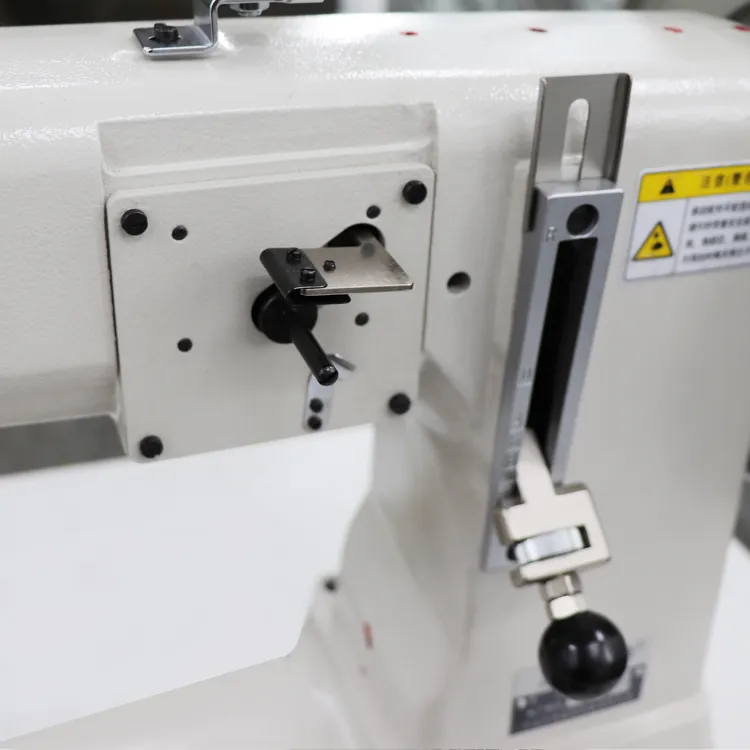Innovative Solutions for Automated Sewing Technology and its Industry Applications
The Future of Fashion Automating the Sewing Process
In the ever-evolving landscape of the fashion industry, the synergy between technology and creativity has opened new doors for innovative manufacturing processes. One area that has witnessed remarkable advancements is the development of automated sewing technologies. As fashion houses strive for greater efficiency, sustainability, and customization, auto sewing has emerged as a game-changing force that promises to redefine how garments are produced.
Auto sewing combines robotics, artificial intelligence (AI), and advanced textiles to create a seamless production line that significantly reduces human intervention. Traditional garment manufacturing is often labor-intensive, involving numerous manual processes that can lead to inconsistencies in quality and increased production times. Automated solutions aim to address these challenges by introducing precision and speed into the sewing operation.
One of the most significant advantages of auto sewing is its ability to streamline the production process. Machines equipped with advanced algorithms can quickly adapt to different fabric types and garment designs, enabling manufacturers to produce a wider variety of styles in shorter time frames. For instance, a robot designed for auto sewing can shift from crafting a simple T-shirt to constructing a complex evening gown with minimal setup time. This flexibility is essential in an industry that thrives on trends and rapid changes in consumer preferences.
Moreover, automated sewing machines not only enhance efficiency but also contribute to improved quality control. With the application of machine vision systems, these machines can detect errors in real time, ensuring that every stitch meets the required standards. This capability minimizes the likelihood of defects and reduces the need for extensive rework, which is often costly and time-consuming. As such, the integration of automation can lead to significant cost savings for fashion brands, allowing them to focus on design and market positioning rather than resolving production issues.
auto sewing

Sustainability is another crucial consideration in modern fashion, and auto sewing presents opportunities for eco-friendly practices
. Traditional garment manufacturing is notorious for its waste generation, primarily due to fabric offcuts and inefficient production processes. Automated machines can make better use of materials, reducing waste by optimizing fabric cutting and sewing patterns. Additionally, advancements in AI can help predict the demand for various styles, allowing brands to produce only what is necessary and minimizing overproduction.Customization is a growing trend in fashion, with consumers increasingly seeking personalized products that reflect their individual styles. Auto sewing technology facilitates this demand by enabling brands to adopt a made-to-order approach. With custom orders integrated into the automated production line, styles can be tailored to specific customer preferences without the delays associated with traditional manufacturing methods. This shift towards personalization not only enhances customer satisfaction but also promotes a more sustainable business model by reducing excess inventory.
Despite the numerous advantages of auto sewing, its implementation is not without challenges. Initial investment costs for advanced machinery can be significant, particularly for small and medium-sized enterprises in the fashion industry. Furthermore, there is a pressing need for skilled technicians who can operate and maintain these sophisticated machines, which creates a skills gap that must be addressed.
However, the long-term benefits of adopting auto sewing technologies are compelling. As the demand for efficiency, sustainability, and customization continues to rise, the fashion industry must adapt and innovate. Automated sewing is not merely a trend; it is a strategic response to the challenges that brands face in a globalized market. By embracing this technology, brands can not only enhance their production capabilities but also position themselves as leaders in a forward-thinking and eco-conscious industry.
In conclusion, the automation of sewing processes signifies a pivotal moment for the fashion industry. Through increased efficiency, enhanced quality control, sustainable practices, and the potential for customization, auto sewing represents a promising direction for future garment manufacturing. As technology continues to advance, the fashion landscape is set to be reshaped, ushering in a new era where creativity meets precision on a global scale. With the right investments and strategies, fashion brands can harness the power of auto sewing to meet consumer demands and redefine their production paradigms, crafting a sustainable and stylish future.
-
Industrial Cylinder Arm Sewing Machine: Revolutionizing Heavy-Duty SewingNewsJul.28,2025
-
Cylinder Arm Sewing Machine: Perfect for Special Sewing ApplicationsNewsJul.28,2025
-
Cylinder Bed Sewing Machine: Essential for Sewing Complex MaterialsNewsJul.28,2025
-
Heavy Duty Sewing Machine: The Essential Tool for Industrial ApplicationsNewsJul.28,2025
-
Computerized Pattern Sewing Machine: Revolutionizing Precision StitchingNewsJul.28,2025
-
Heavy Duty Industrial Sewing Machine: Power Meets PrecisionNewsJul.28,2025
-
Leather Sewing Machine: The Industrial Standard for Tough MaterialsNewsJul.18,2025





























